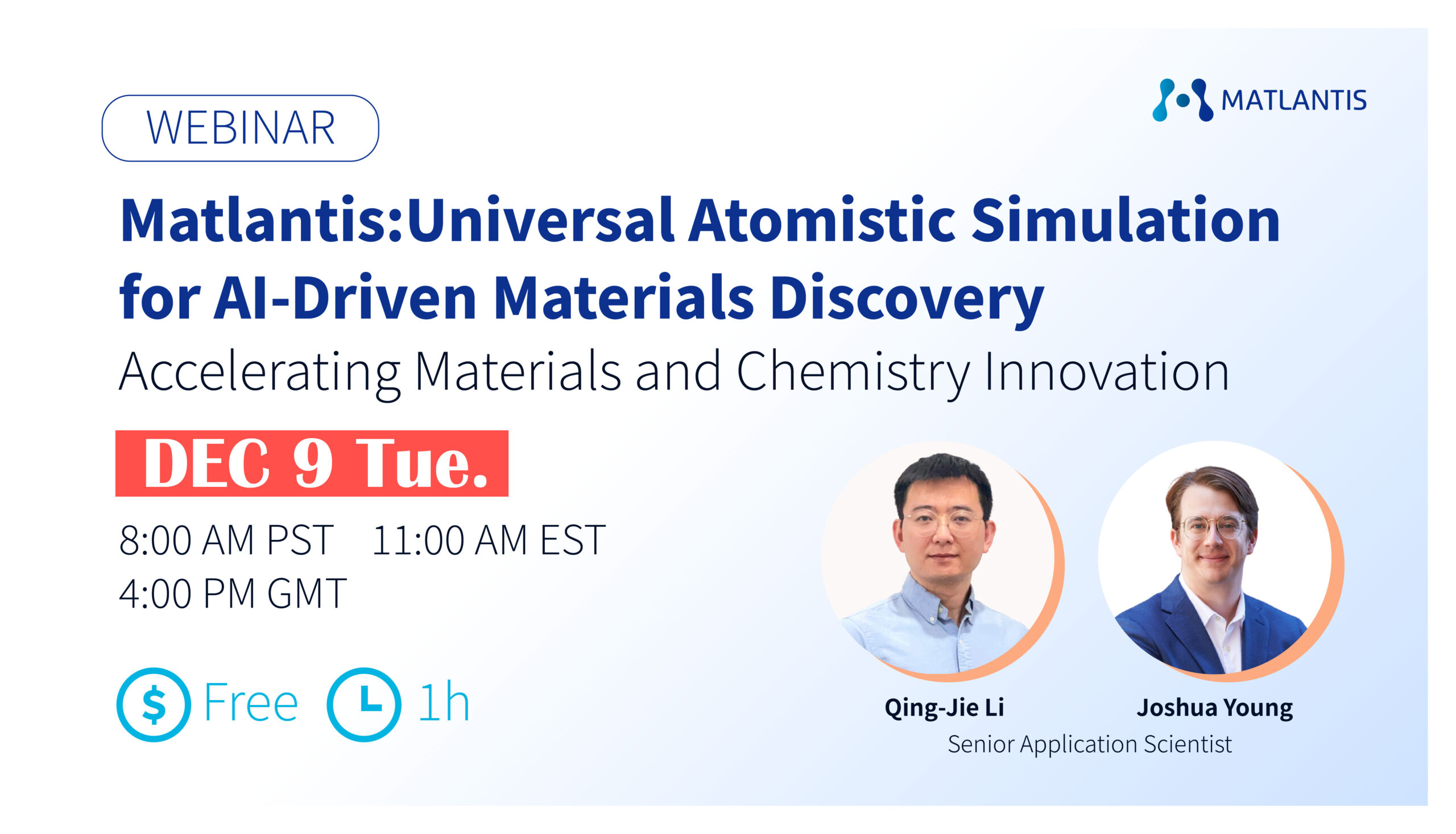Video Streaming
Event Report
Webinars
Online2025.1.20 (JPN)
[Archived] Lecture by Professor Yasushi Sekine of Waseda University Event Report

In this webinar, Professor Yasushi Sekine from Waseda University gave a talk on the theme of "Understanding the mechanism of green, on-demand, highly efficient hydrogen production by ammonia decomposition in a low-temperature electric field," in which he shared his latest research results using Matlantis. More than 140 people attended the session, which was very meaningful, with lively Q&A sessions.
Even if you were unable to attend the webinar, we hope you will take a look at the materials and videos to make use of the latest research findings.
* Latest research results using Matlantis
Hydrogen production by NH₃ decomposition at low temperatures assisted by surface protonics
Participant comments
- The latest research status was explained in a very easy-to-understand manner.
- The teacher's lecture was very easy to understand, and I was able to understand how to use Matlantis.
- In addition to the presentations, the Q&A session was very informative.
Highlights of the lecture
Research Background
Viewed from space, the Earth is a closed system, and continued reliance on fossil fuels has limitations in terms of sustainability. Therefore, there is a demand for technologies that utilize resources on Earth to use energy efficiently and sustainably. Ammonia has attracted attention as a hydrogen carrier due to its high energy density and ease of transportation. However, it has issues such as toxicity and difficulty in combustion, so the key is technology to decompose ammonia and efficiently extract energy.
Ammonia is already widely produced and used, and is expected to have potential as a hydrogen carrier. However, current decomposition technology requires high temperatures (500°C or higher), which is a barrier to practical use. To address this issue, the use of "surface protonics" has attracted attention as one approach to efficiently decomposing ammonia at low temperatures.
Professor Sekine's research to date has demonstrated the possibility of realizing a decomposition reaction at low temperatures by using an electric field to move protons on the catalyst surface. In particular, it has been experimentally confirmed that ammonia decomposition can be promoted even at low temperatures by applying an electric field to the Ru/CeO2 catalyst.
Modeling based on experimental results and elucidation of mechanisms by Matlantis
In this study, computational chemistry modeling was performed based on the experimental results, and the reactions on the catalyst surface were evaluated using Matlantis.
First, we modeled the state of the catalyst surface in the absence and presence of an electric field based on experimental results. Specifically, it was experimentally found that in the absence of an electric field, nitrogen is modified on the catalyst surface and high temperatures are required for the reaction, whereas in the presence of an electric field, hydrogen is modified and the reaction proceeds even at low temperatures. Therefore, the presence or absence of an electric field was expressed by the modification state of nitrogen/hydrogen on the catalyst surface.
In addition, to evaluate these reaction mechanisms, a 500-atom scale interface model was constructed and calculations were performed using Matlantis. As a result, it was confirmed that the activation energy and reaction mechanism differ depending on whether or not an electric field is applied. In particular, it was shown that the activation energy is low when an electric field is applied, enabling efficient ammonia decomposition.
New developments in catalyst design using Matlantis and quantum computing techniques
By combining Matlantis with quantum computing techniques and machine learning, it has been found possible to investigate adsorption phenomena in heterogeneous catalytic reactions. For example, this approach can predict the optimal adsorption position of multiple molecules from the adsorption data of one or two molecules. In the future, this approach is expected to further elucidate the mechanism of catalytic reactions under conditions closer to those observed in experiments, and to propose design guidelines aimed at improving catalyst performance.
Download materials and watch videos here
公開日:2025.02.04


